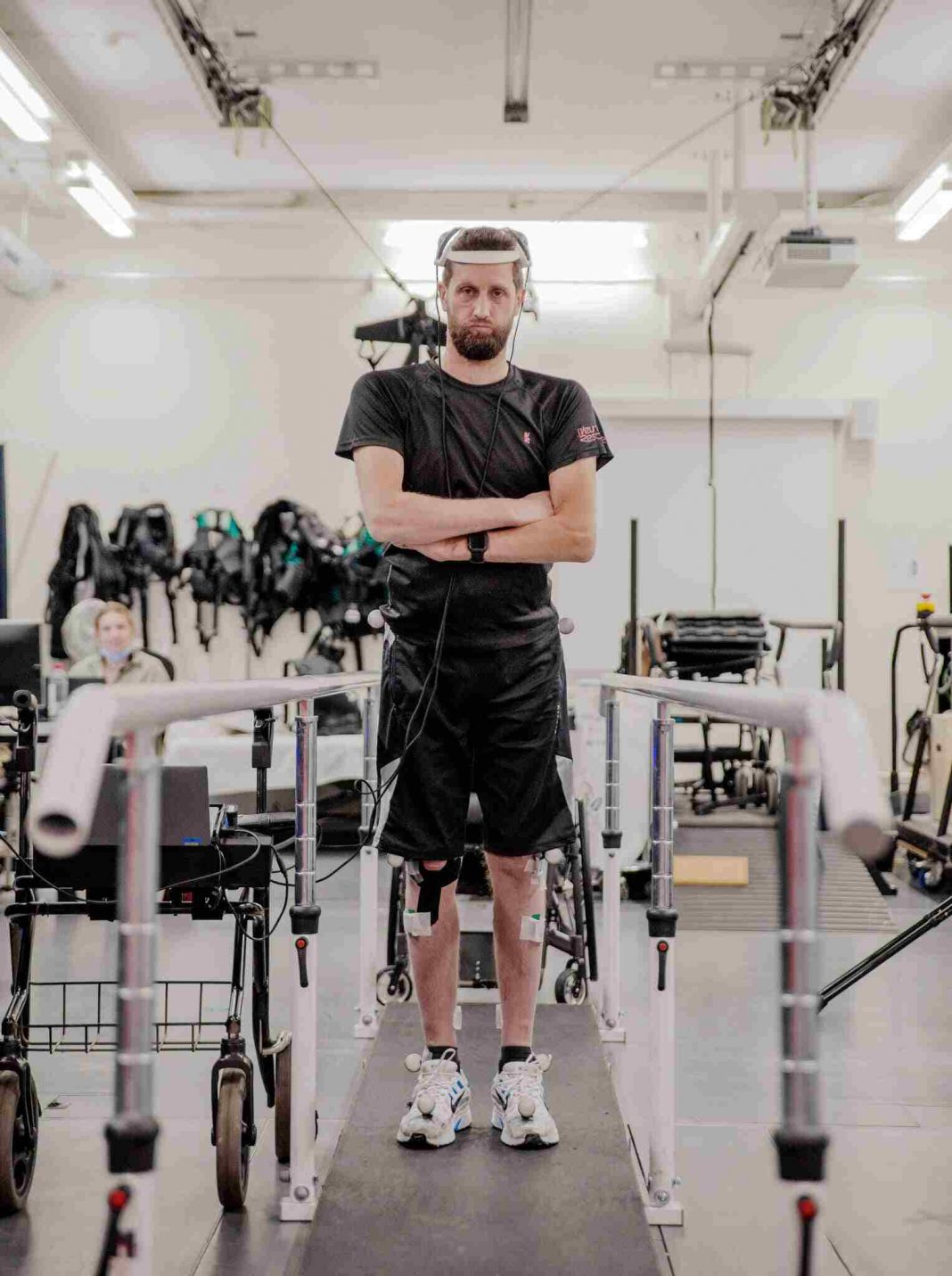In 2011, while residing in China, Gert-Jan Oskam was paralysed from the waist down in a motorbike accident. Now, thanks to a variety of aids, he can move his legs again as he pleases.
Swiss researchers detailed implants that created a “digital bridge” between Mr. Oskam’s brain and spinal cord, allowing them to bypass damaged regions, in a paper published on Wednesday in the journal Nature. Mr. Oskam, age 40, was able to stand, walk, and climb a steep slope with the use of a walker thanks to the newfound knowledge. His skills have persisted over a year after the implant was placed, and he has even shown evidence of neurological healing, using crutches even when the device was turned off.
Recent decades have seen a lot of technical advancements in the treatment of spinal cord injuries. In 2016, researchers headed by Dr. Courtine helped paralysed animals walk again, while another group of scientists gave a man control of his paralysed hand. Researchers in 2018, again directed by Dr. Courtine, found a technique to stimulate the brain using electrical-pulse generators, reviving the mobility of persons who had been largely paralysed. Improvements in brain stimulation techniques made it possible for paralysed people to walk, swim, and ride bicycles after only one day of therapy.
In earlier years, Mr. Oskam had undergone stimulation operations and had even restored part of his walking abilities, but his progress finally stalled. Mr. Oskam, speaking at a press conference, commented on how the use of these stimulation devices had left him with a sense of disconnection between his brain and his body.
An AI thought decoder was used in the latest study’s “brain-spine interface” to translate Mr. Oskam’s intents (which were picked up as electrical impulses in his brain) into physical motions. The natural progression from idea to goal to action was maintained in its entirety. According to Dr. Courtine, the digital bridge across the damaged areas of the spine was the sole change.
The finding “raises interesting questions about autonomy, and the source of commands,” said Andrew Jackson, a neurologist at Newcastle University who was not involved in the study. You’re further blurring the conceptual line between “the brain” and “the technology.”
Electrodes were inserted in Mr. Oskam’s skull and spine to produce this effect. A machine-learning programme was then used to analyse the subject’s brain activity as he attempted to control various bodily parts. This thinking decoder might correlate electrical activity at certain electrodes with predetermined goals: When Mr. Oskam moved his ankles, one set of lights illuminated; when he moved his hips, another set of lights illuminated.
Another algorithm was utilised to link the brain implant to the spinal implant, which was programmed to transmit electrical impulses to various regions of his body, triggering movement. The programme took into consideration subtle changes in the tempo and direction of muscular contractions and relaxations. Mr. Oskam was able to immediately adapt his technique depending on what was working and what wasn’t because of the 300 ms interval at which impulses were transferred between his brain and spine. His hip flexors felt better after the first session of therapy.
Researchers spent the following several months tuning the brain-spine interface so that it would be more useful for doing everyday tasks like walking and standing. After months without therapy, Mr. Oskam’s gait improved to the point that he could walk up and down stairs and ramps with remarkable ease. In addition, after a year of therapy, he was able to move independently of the brain-spine interface. Weight-bearing, balance, and gait tests all showed considerable improvements, as reported by the researchers.
The researchers were honest about the caveats in their study. Although the existing brain-spine interface is appropriate for walking, it is probably not enough for recovering mobility of the upper body, which requires a more nuanced understanding of the patient’s wishes. In addition to being invasive, the treatment entails several surgical procedures and extensive periods of physical rehabilitation. Not all cases of paralysis caused by the spinal cord can be cured with the present treatment method.

